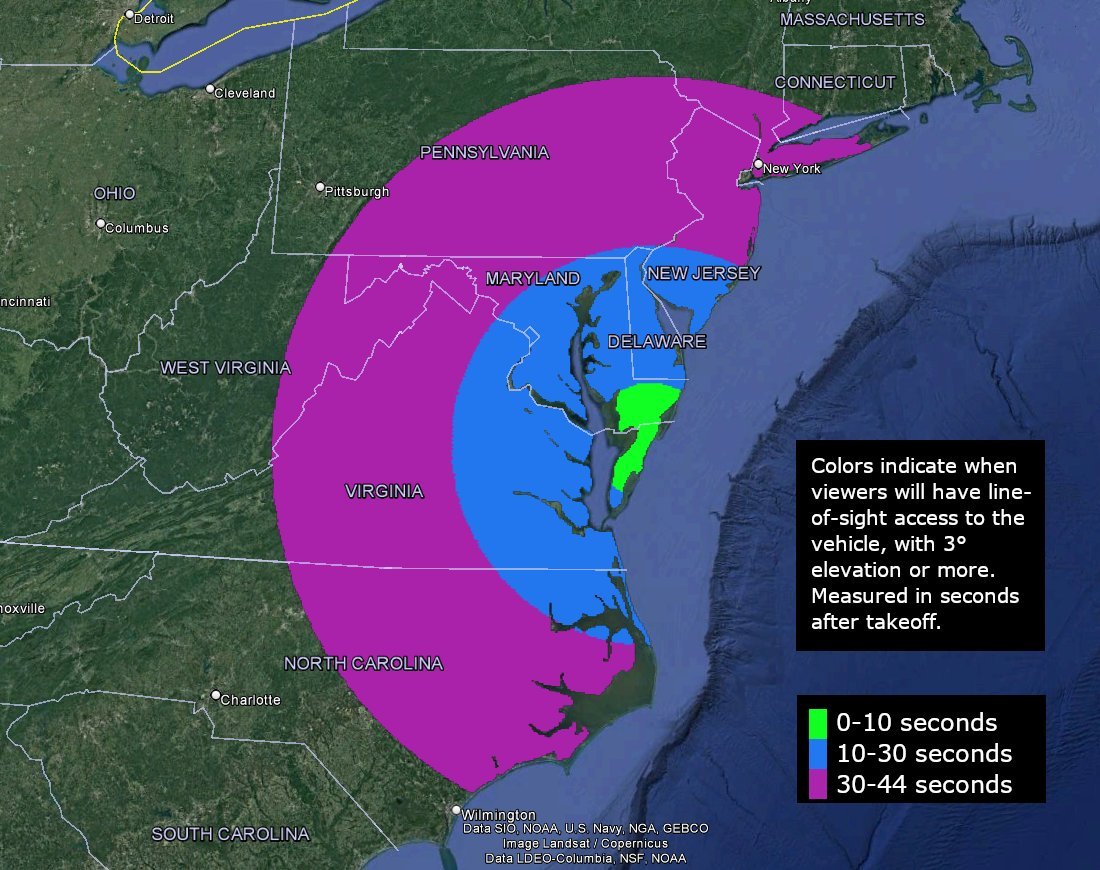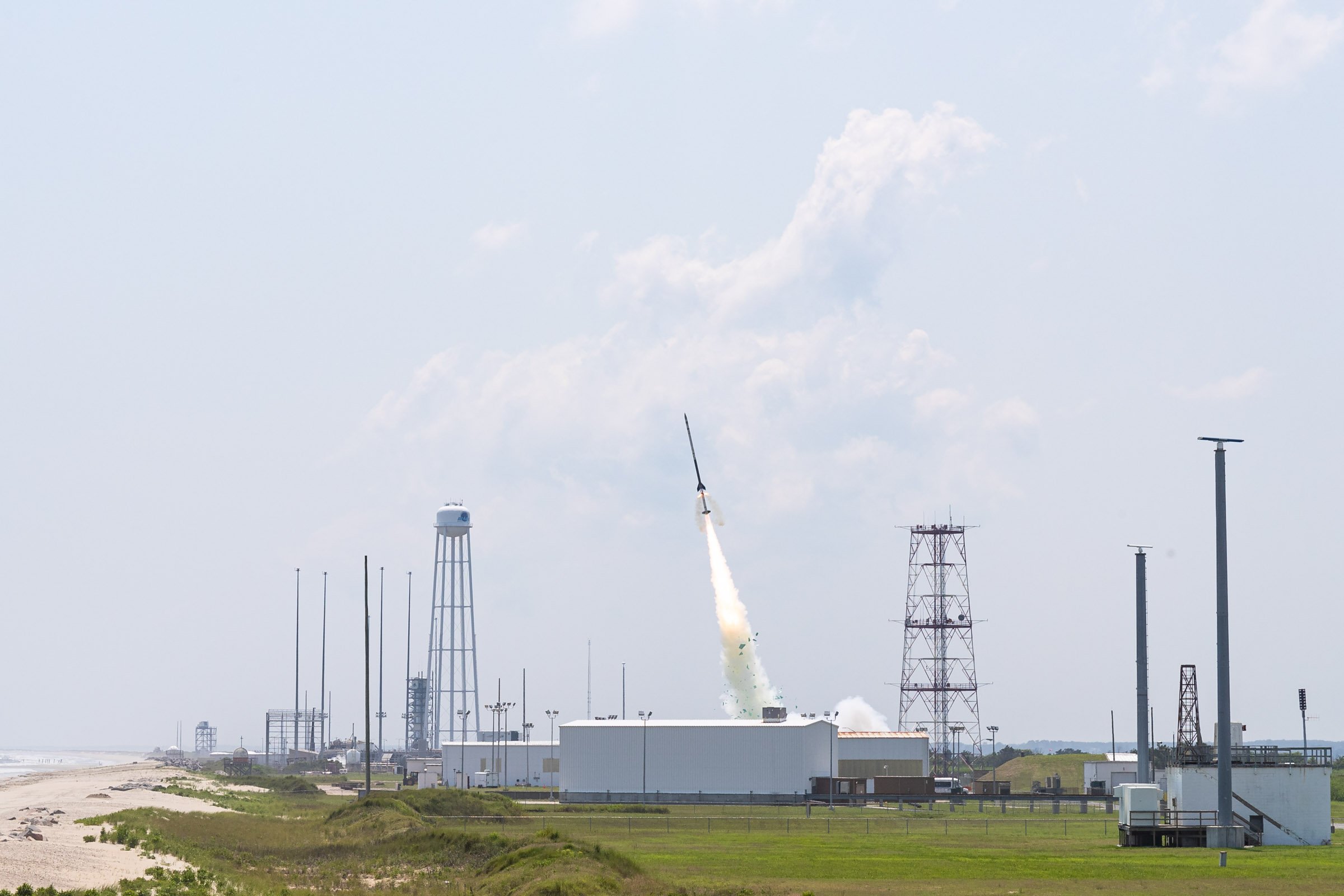7:15 AM | *NASA/Wallops rocket launch on Thursday night, January 6th may be visible to residents in the Mid-Atlantic region*
Paul Dorian
The Black Brant IX sounding rocket may be seen in the Mid-Atlantic region as it ascends into space. Map courtesy NASA/Christian Billie
Overview
There will be a rocket launch on Thursday night, January 6th at the NASA/Wallops Island facility and it may be visible to residents in the Mid-Atlantic region. A sounding rocket is scheduled to launch in the window between 10 PM on Thursday night to 2 AM early Friday morning. This mission hopes to shed light on the sources of X-rays that push towards Earth from elsewhere in our galaxy.
Details
It is known that X-rays bombard the Earth on a daily basis, but the sources and characteristics of these are not clearly understood. A sounding rocket mission called “Diffuse X-rays from the Local galaxy, or DXL, is designed to shed some light on the sources of so-called soft X-rays that push towards the earth from elsewhere in our galaxy. While not harmful to humans on Earth, soft X-rays can make changes in the Earth’s ionosphere which can disturb radio communications and the accuracy of GPS navigation systems. Soft X-rays have lower energy as compared to hard X-rays, which are used in imaging for medical applications.
“Very low energy diffuse X-rays from space are believed to come from two sources,” said Massimiliano Galeazzi, the principal investigator for the DXL mission from the University of Miami, Florida. “The first source is located outside our solar system and is generated by remnants of multiple supernovae explosions forming what is now called the Local Hot Bubble (LHB) region of our galaxy. The second source is within the solar system and is generated by the solar wind charge exchange. DXL seeks to gain a better understanding of the nature and characteristics of these sources.” This will be the fourth flight of DXL. The first flight in 2012 confirmed the Local Hot Bubble as a source of these X-rays. Data from the flight indicated that only about 40 percent of the soft X-ray background originates within the solar system, which means the LHB is the dominant source.
DXL will launch on a Black Brant IX sounding rocket on Thursday night or early Friday morning with a backup launch window extending from the 7th to 17th of January if needed. Live coverage of the mission will begin at 9:40 PM on Thursday night on the Wallops YouTube site and you can also follow the latest on their Twitter page. The NASA Visitor Center at Wallops will not be open for this mission.
Meteorologist Paul Dorian
Arcfield
arcfieldweather.com
Follow us on Facebook, Twitter, YouTube


